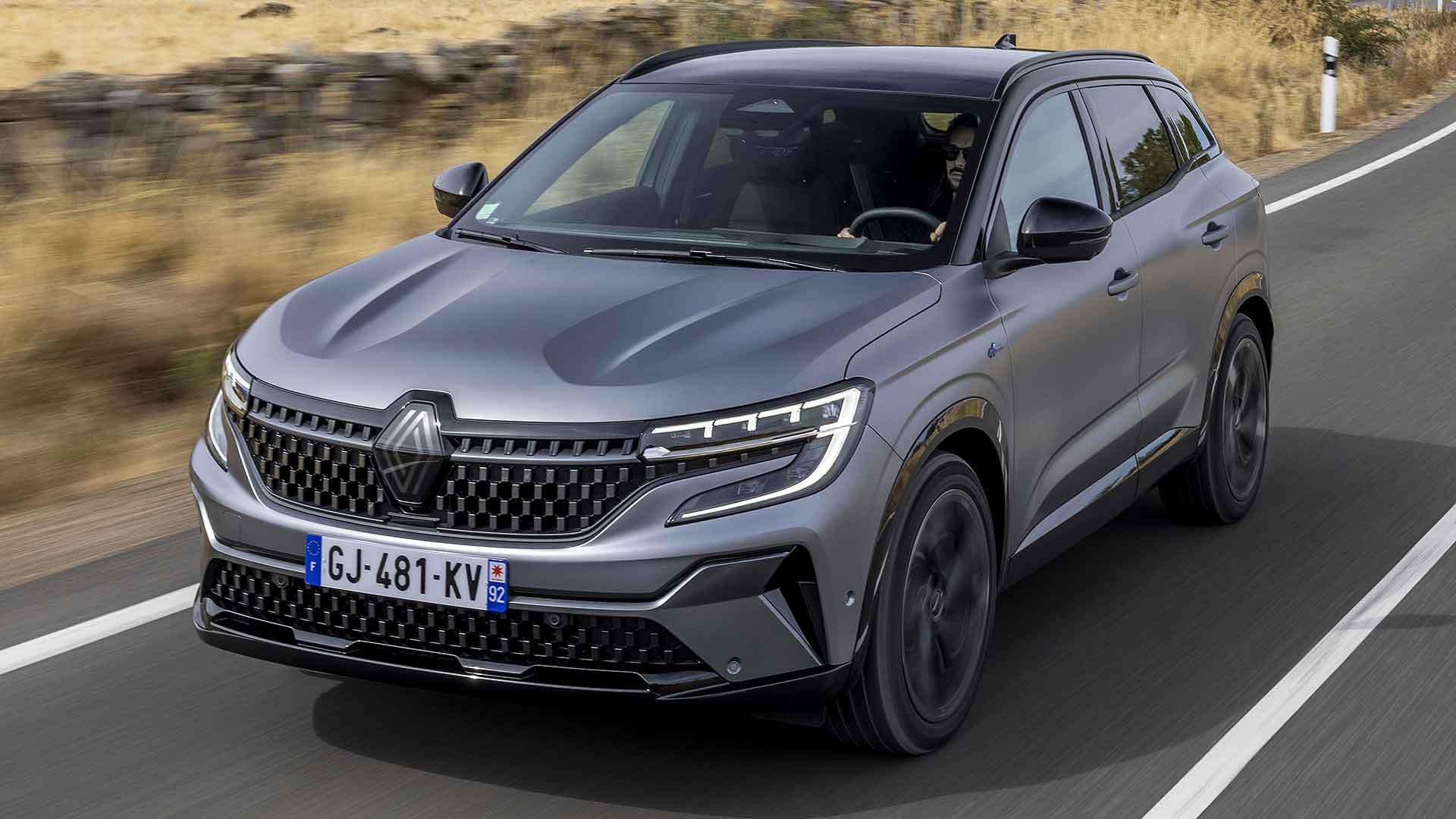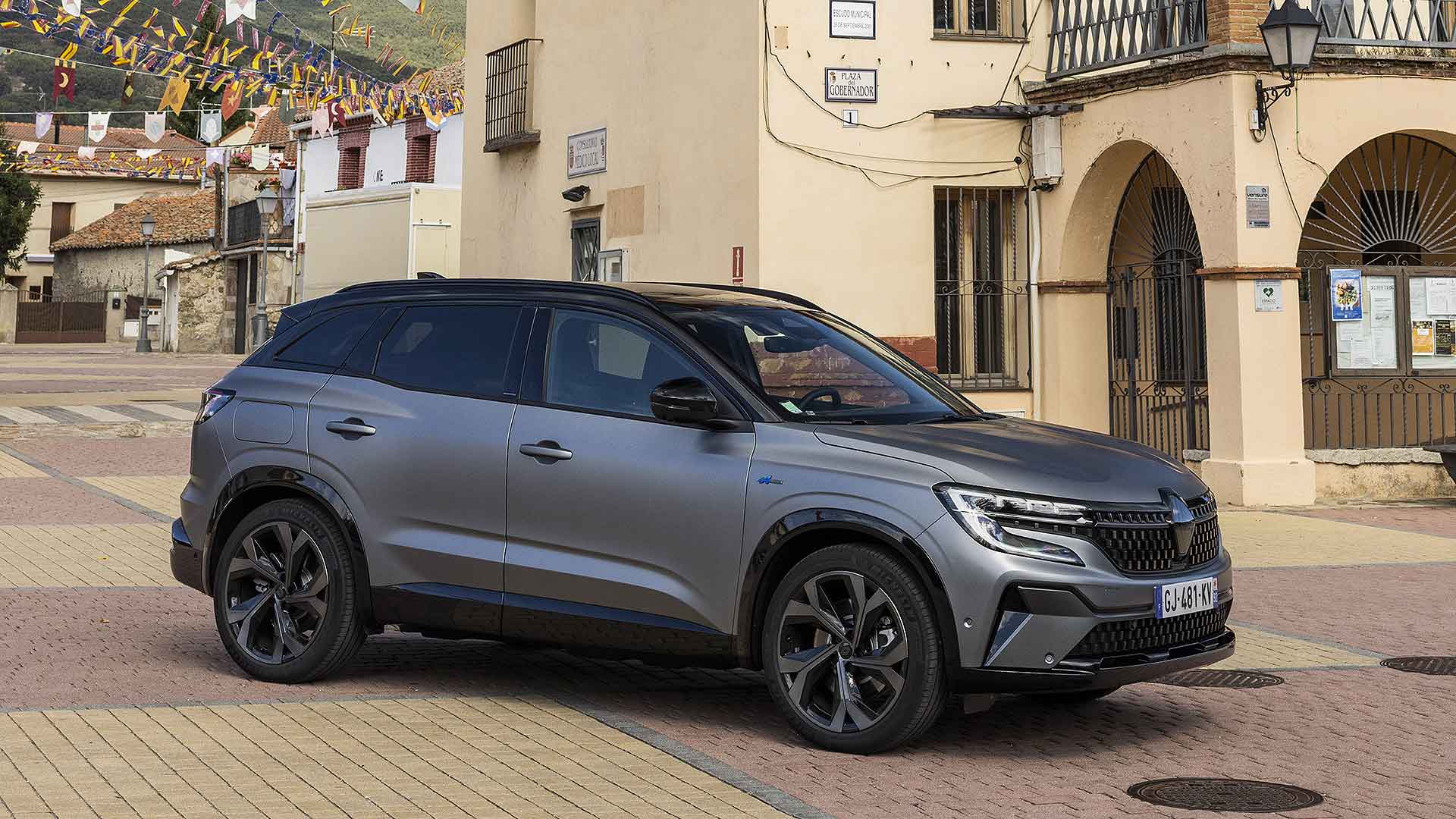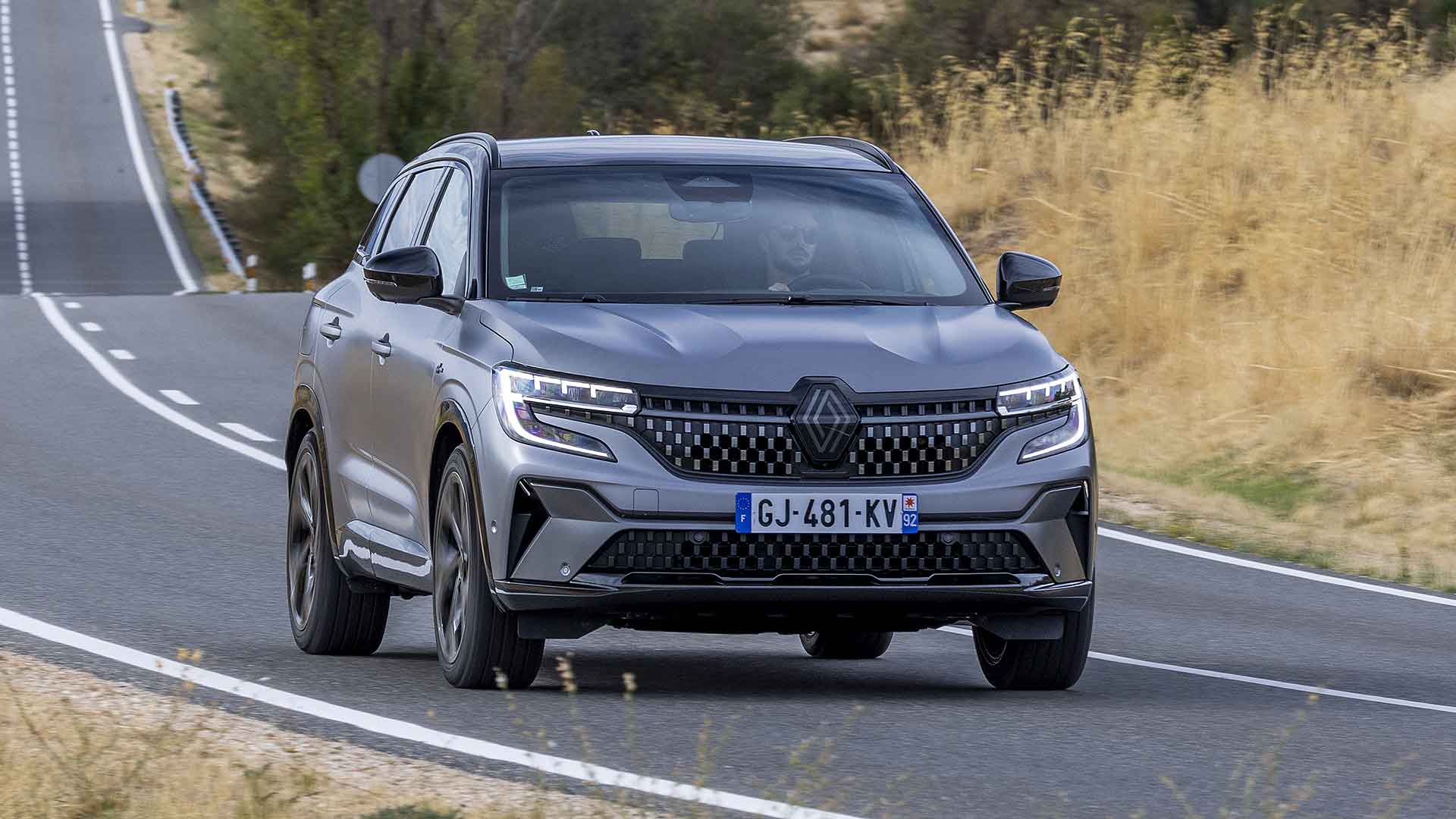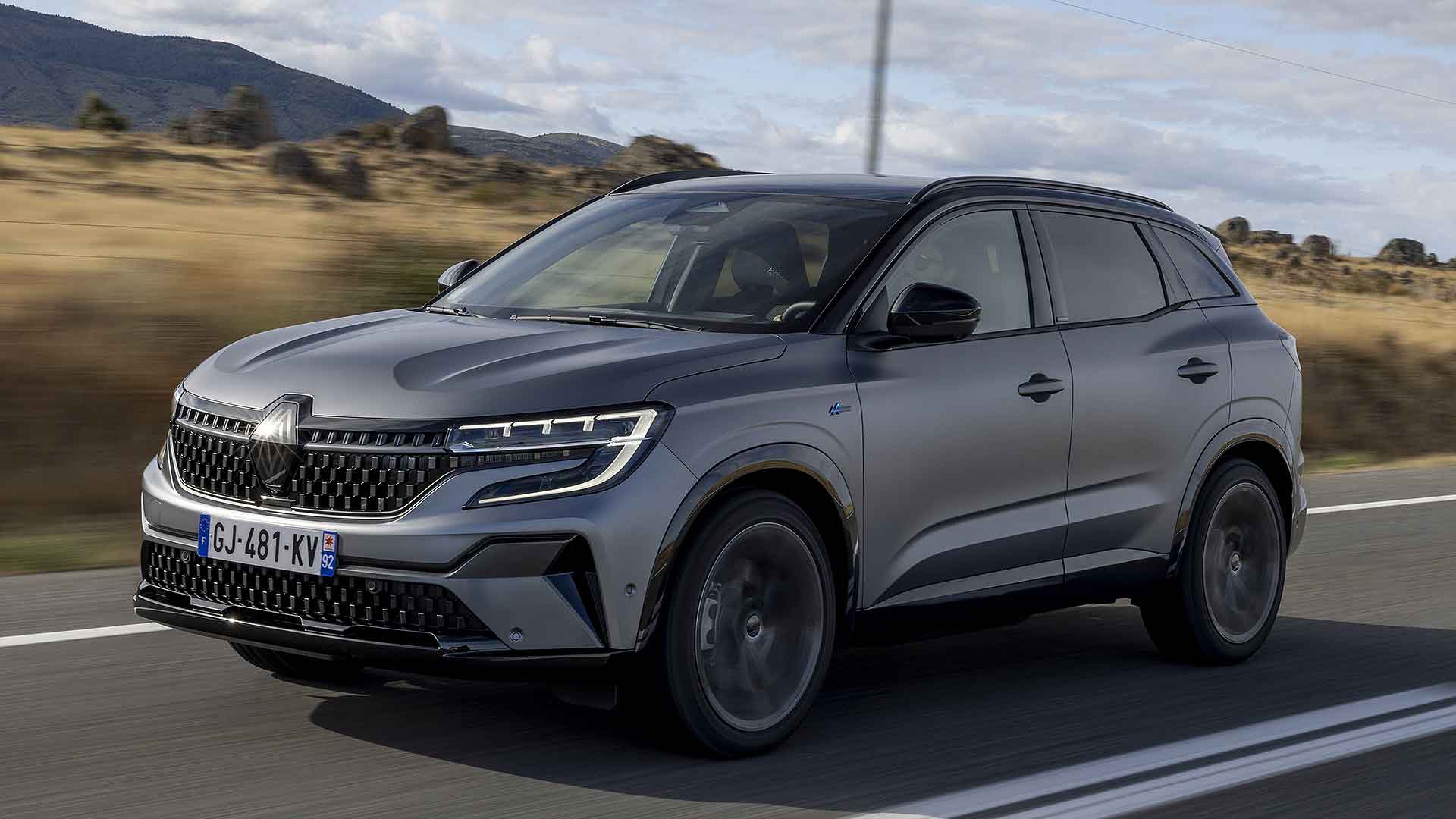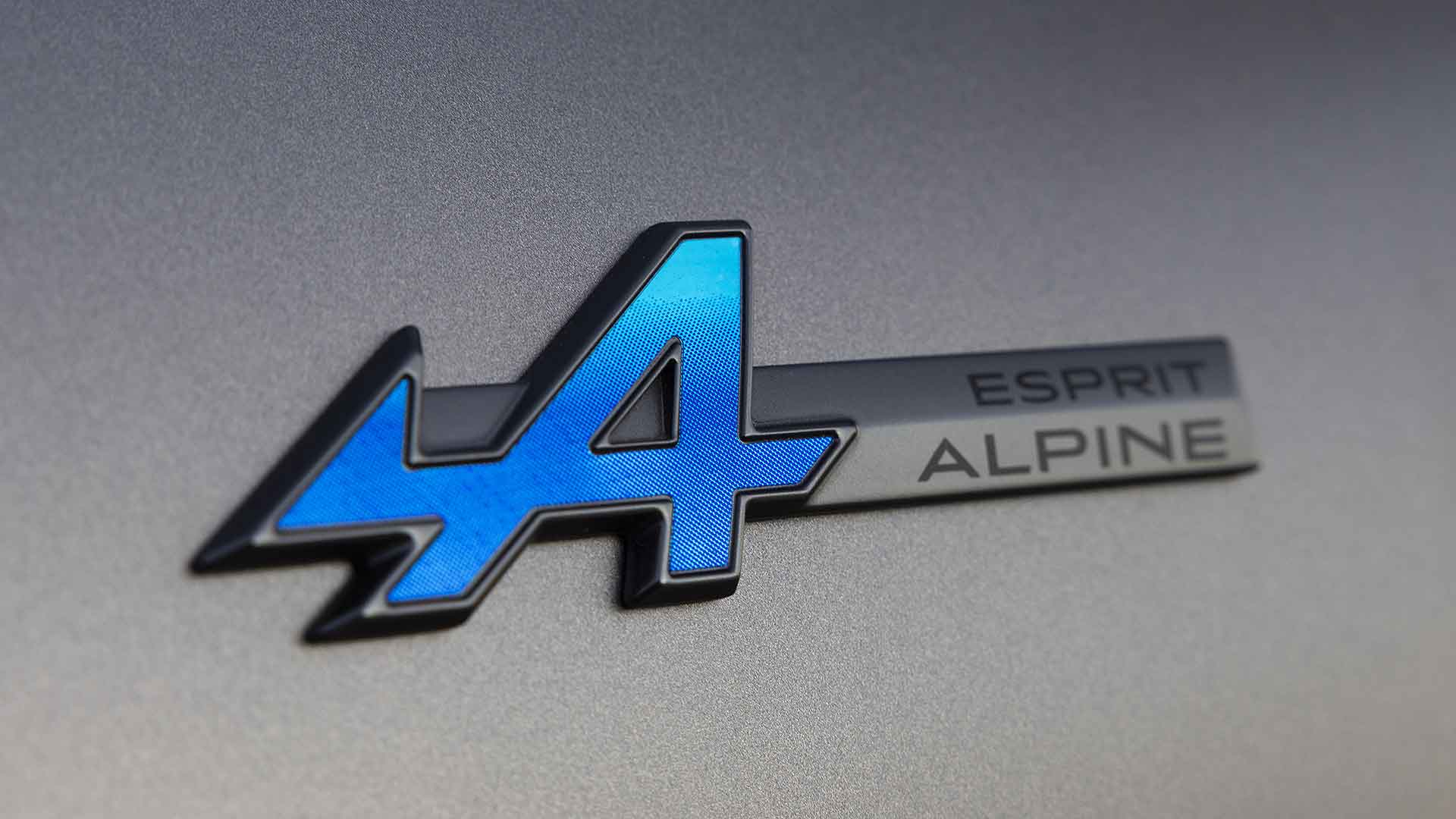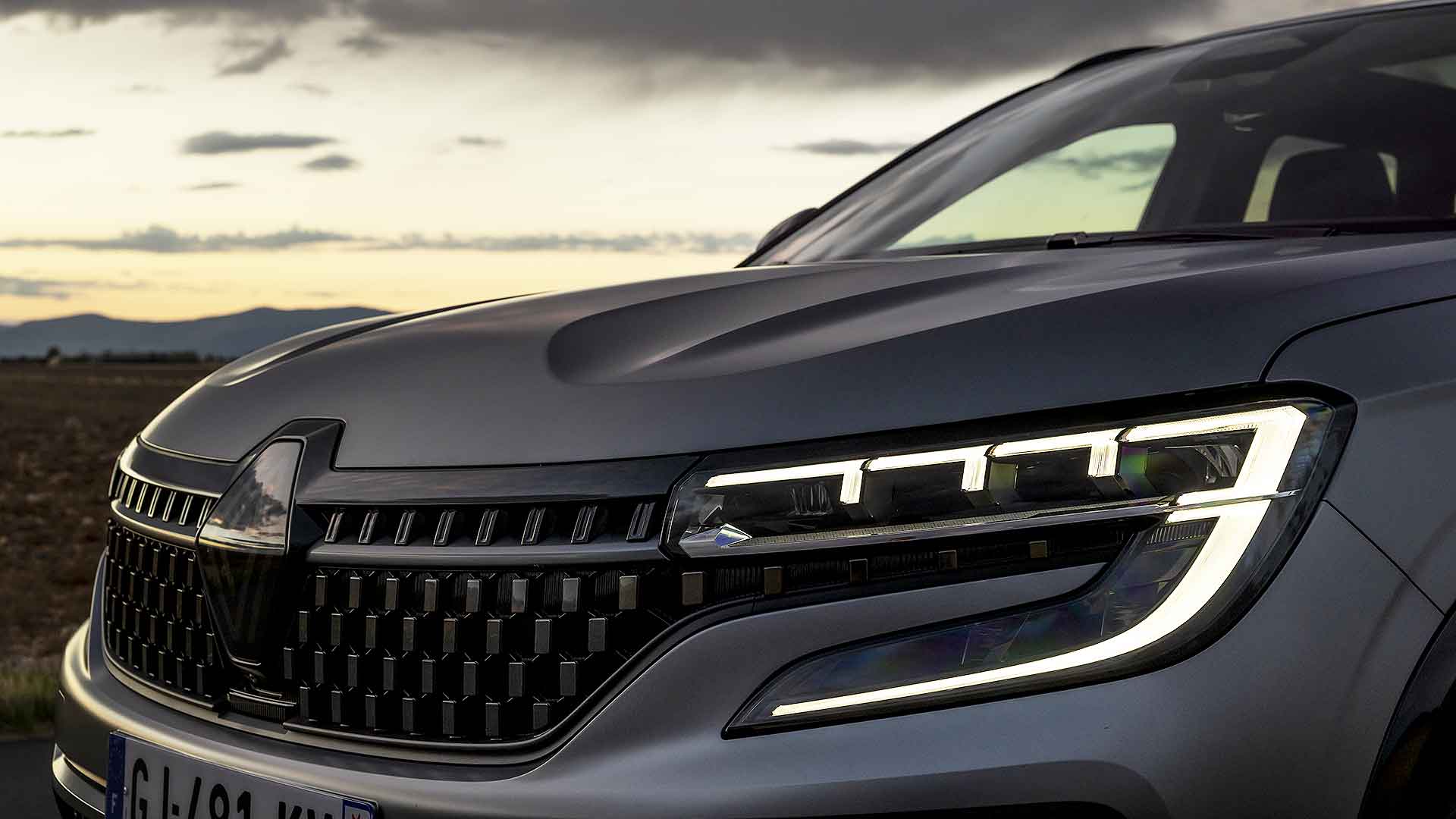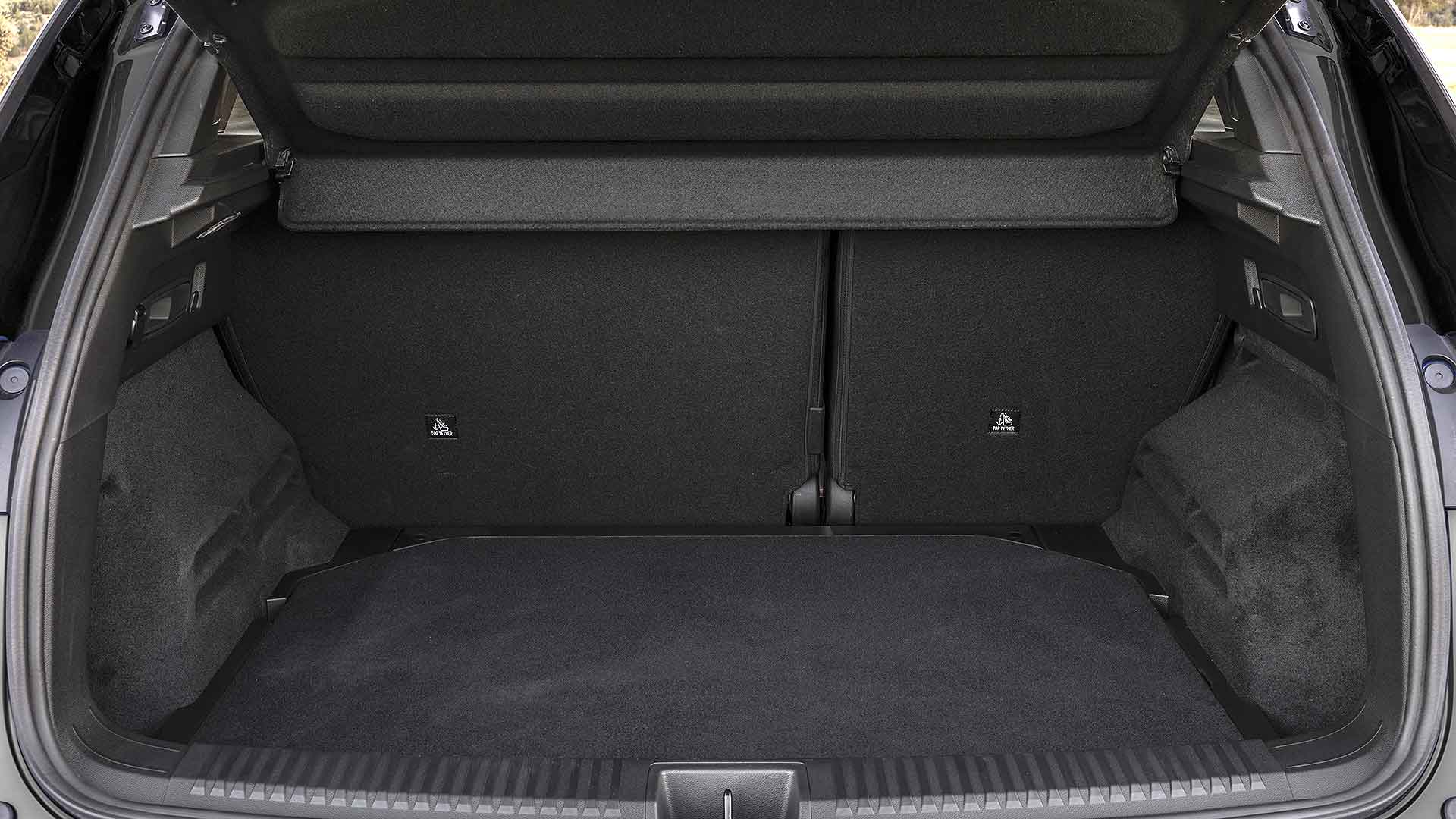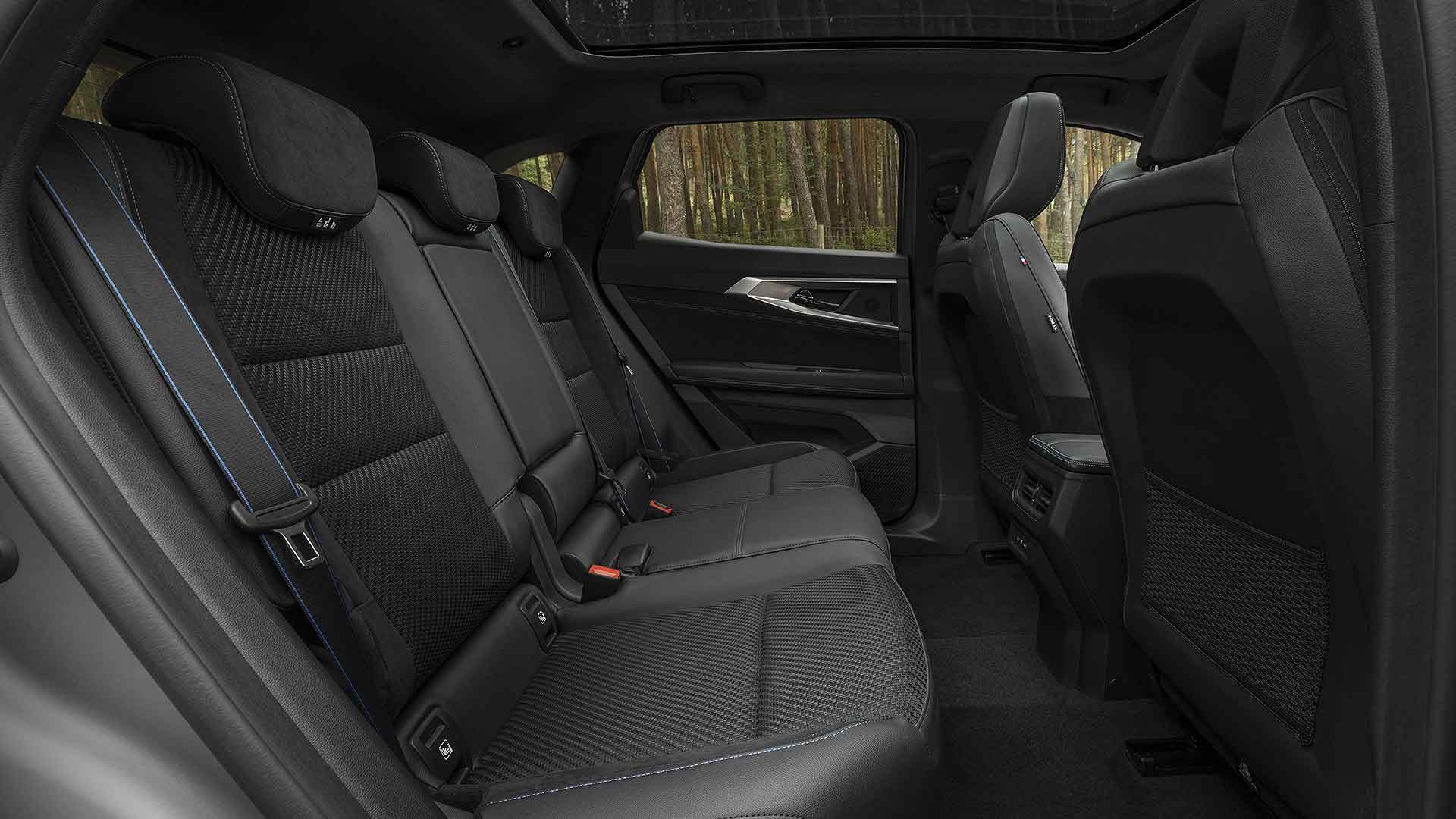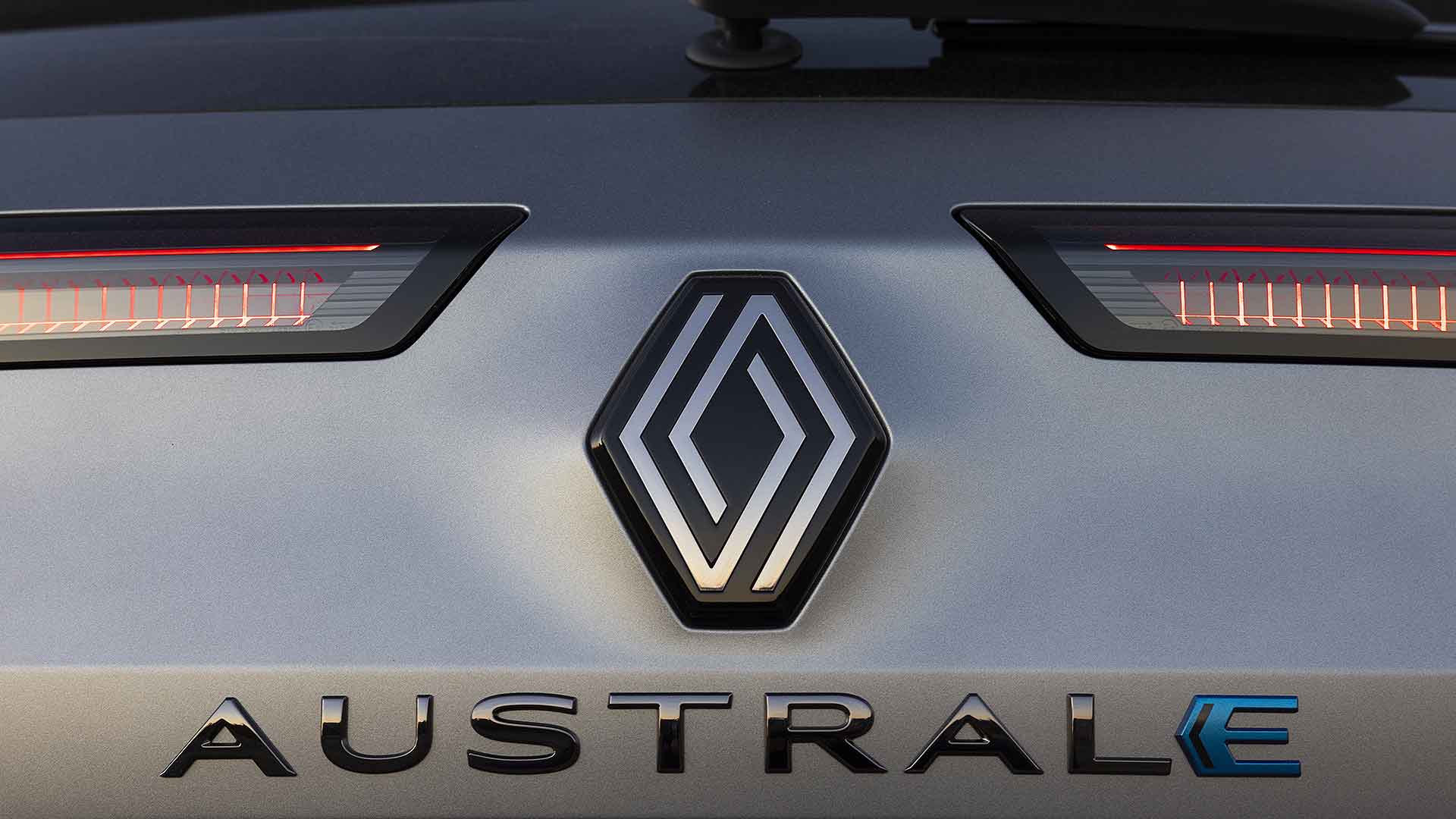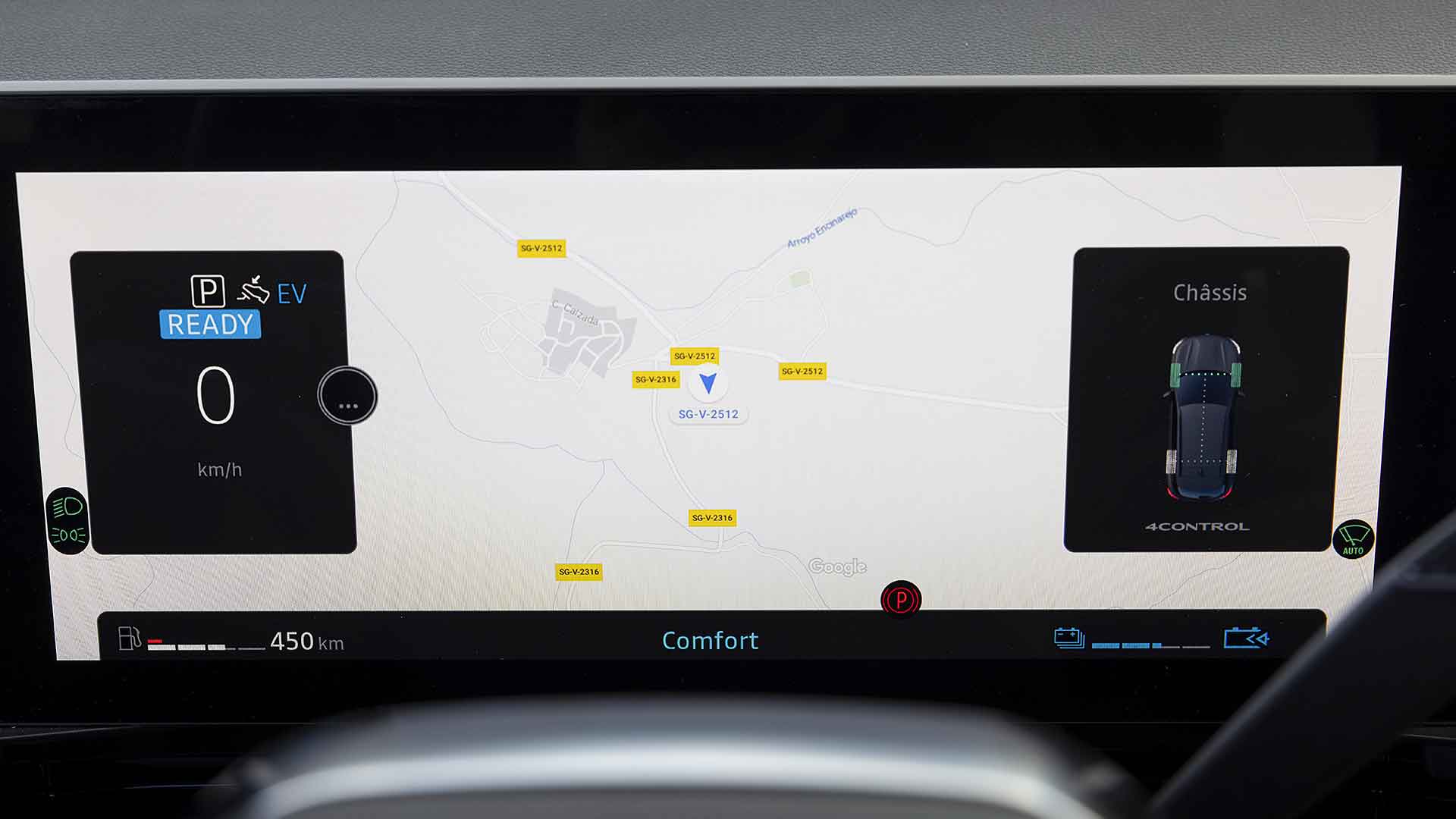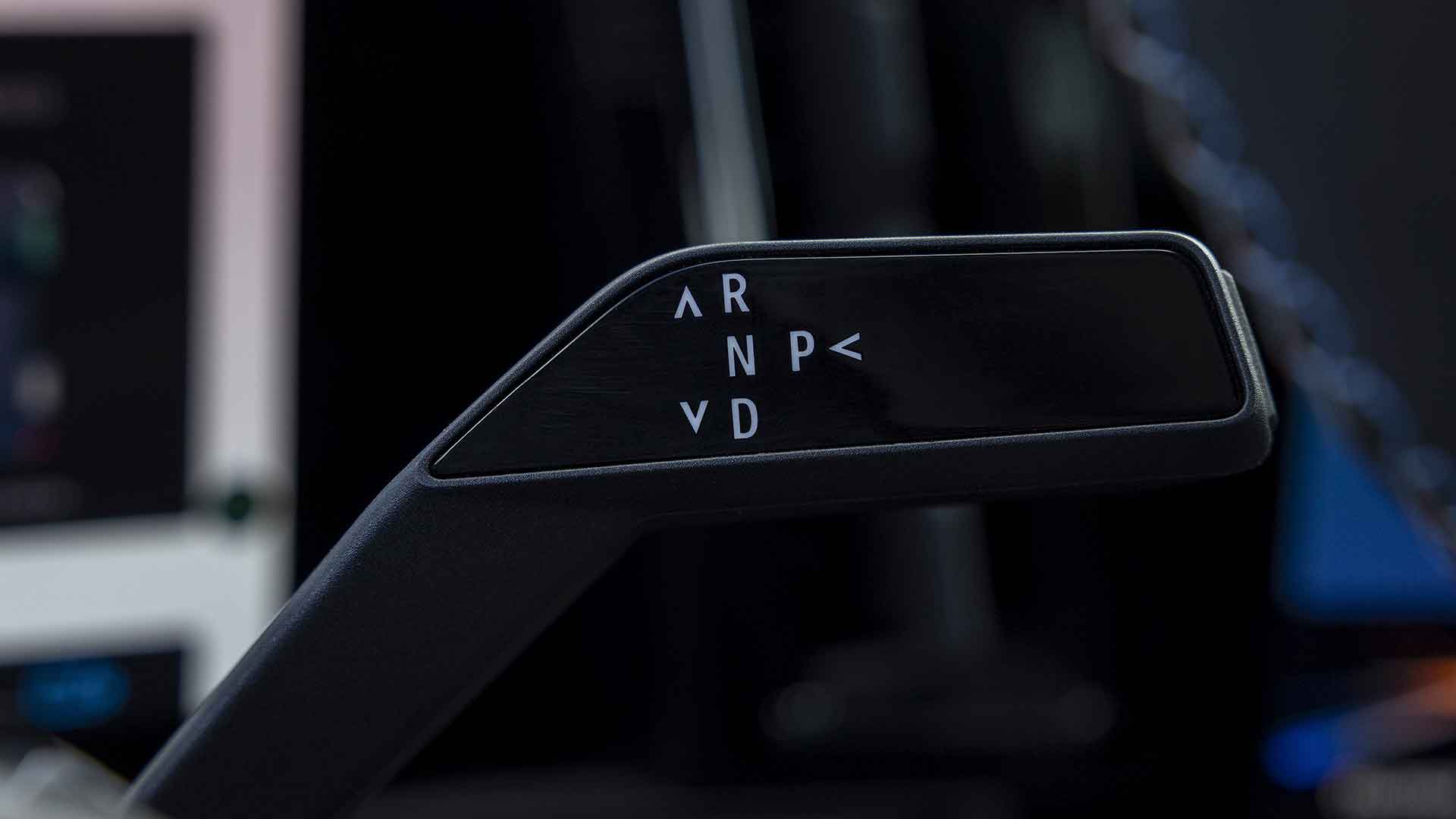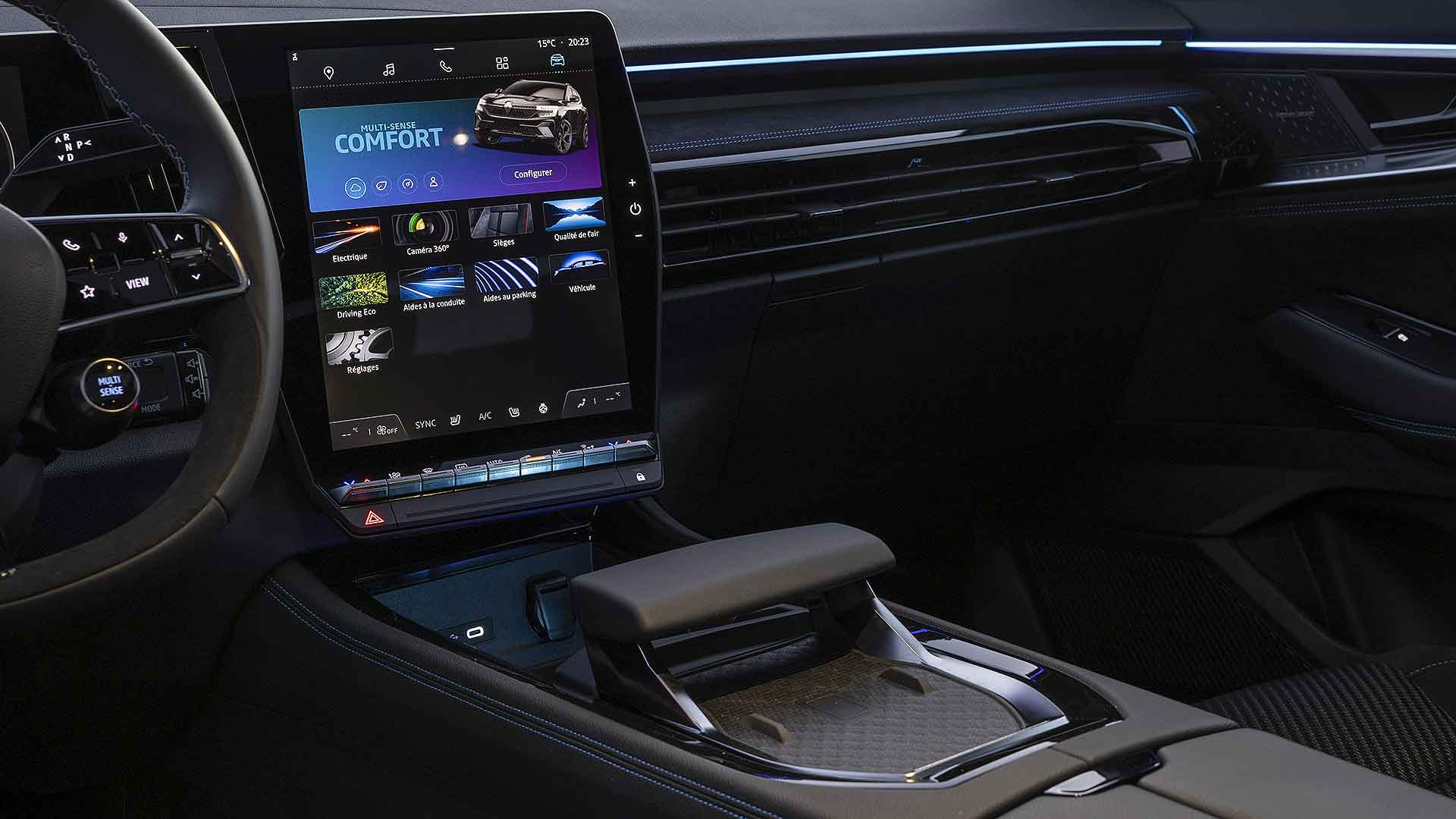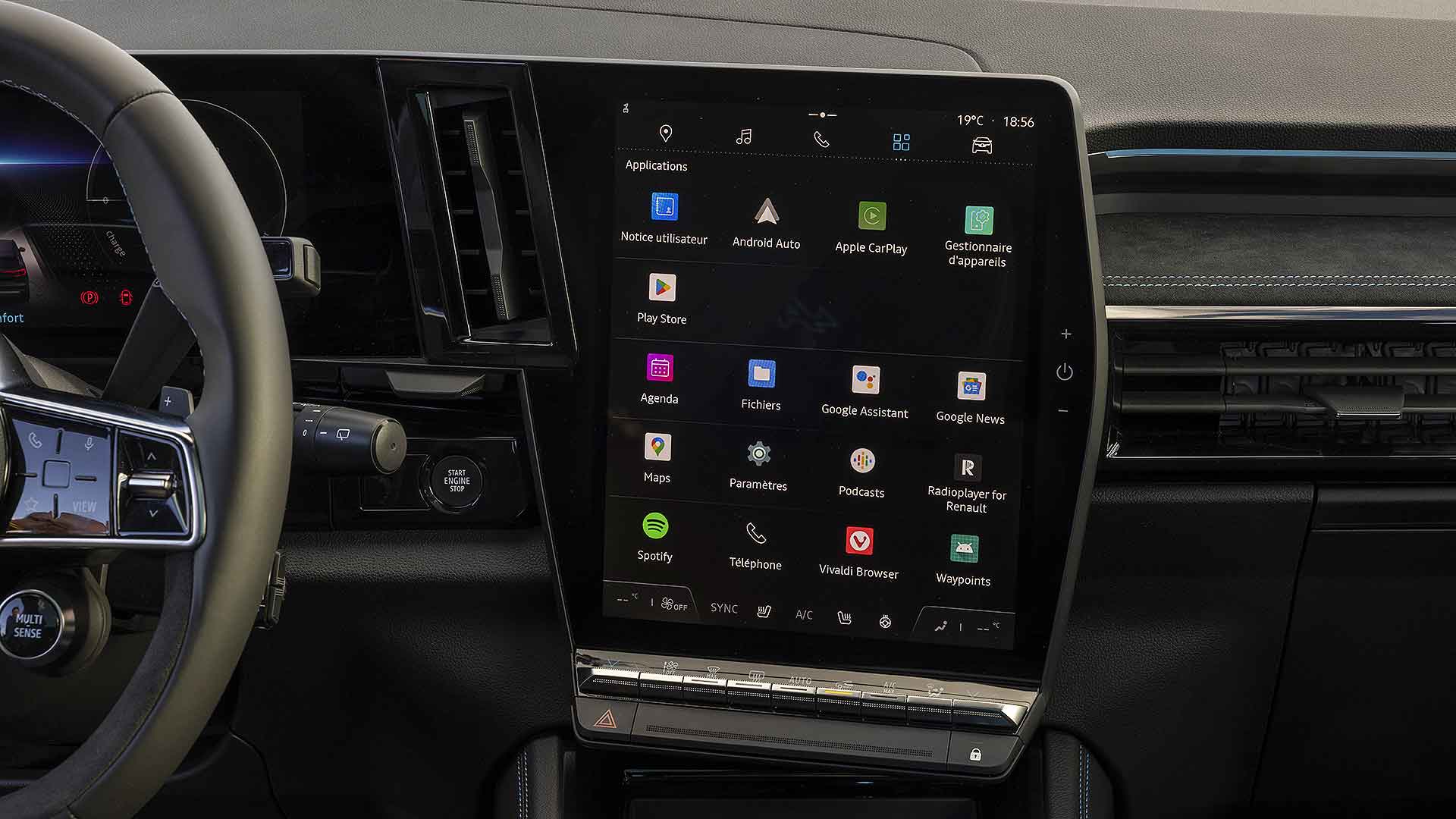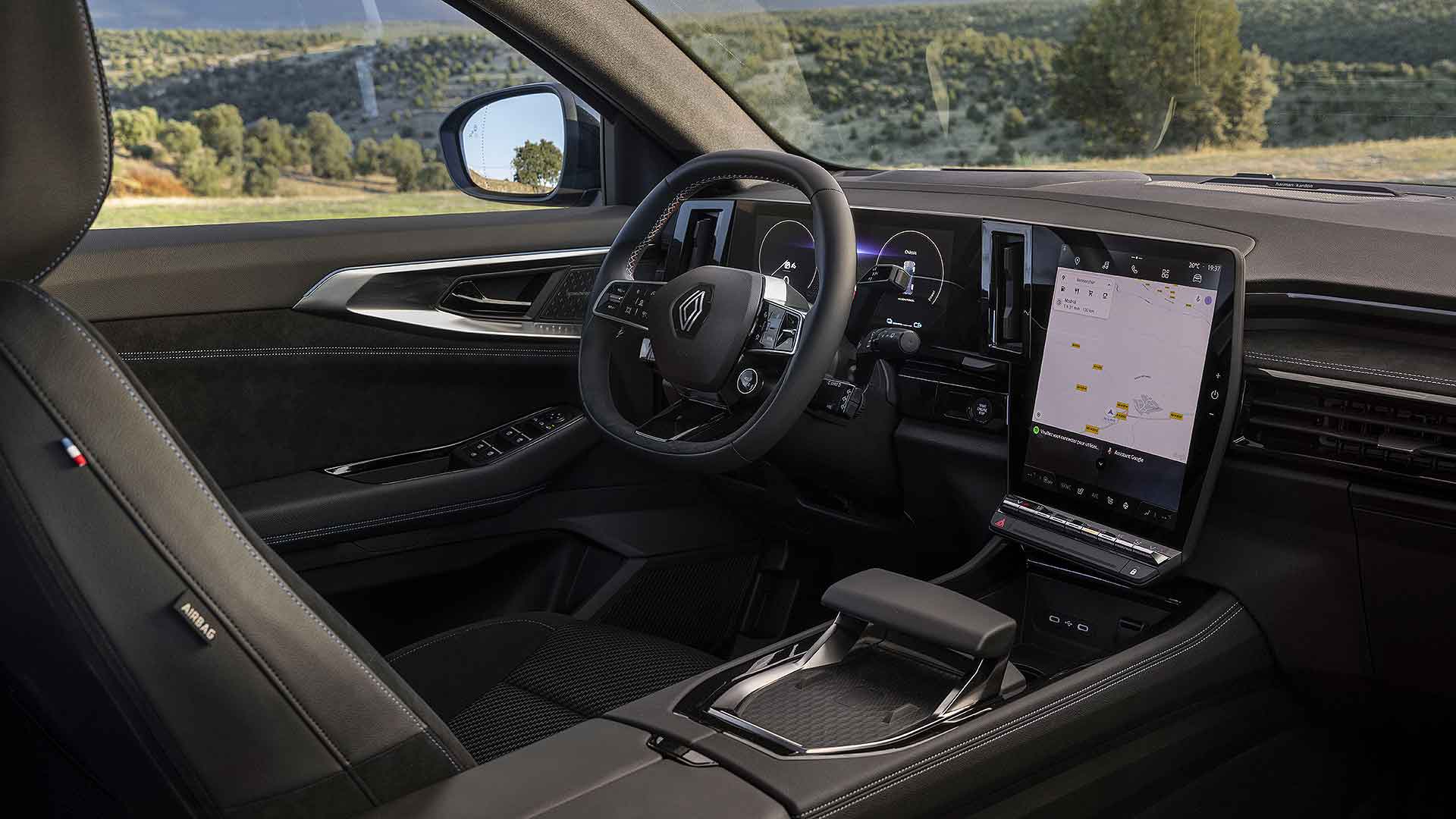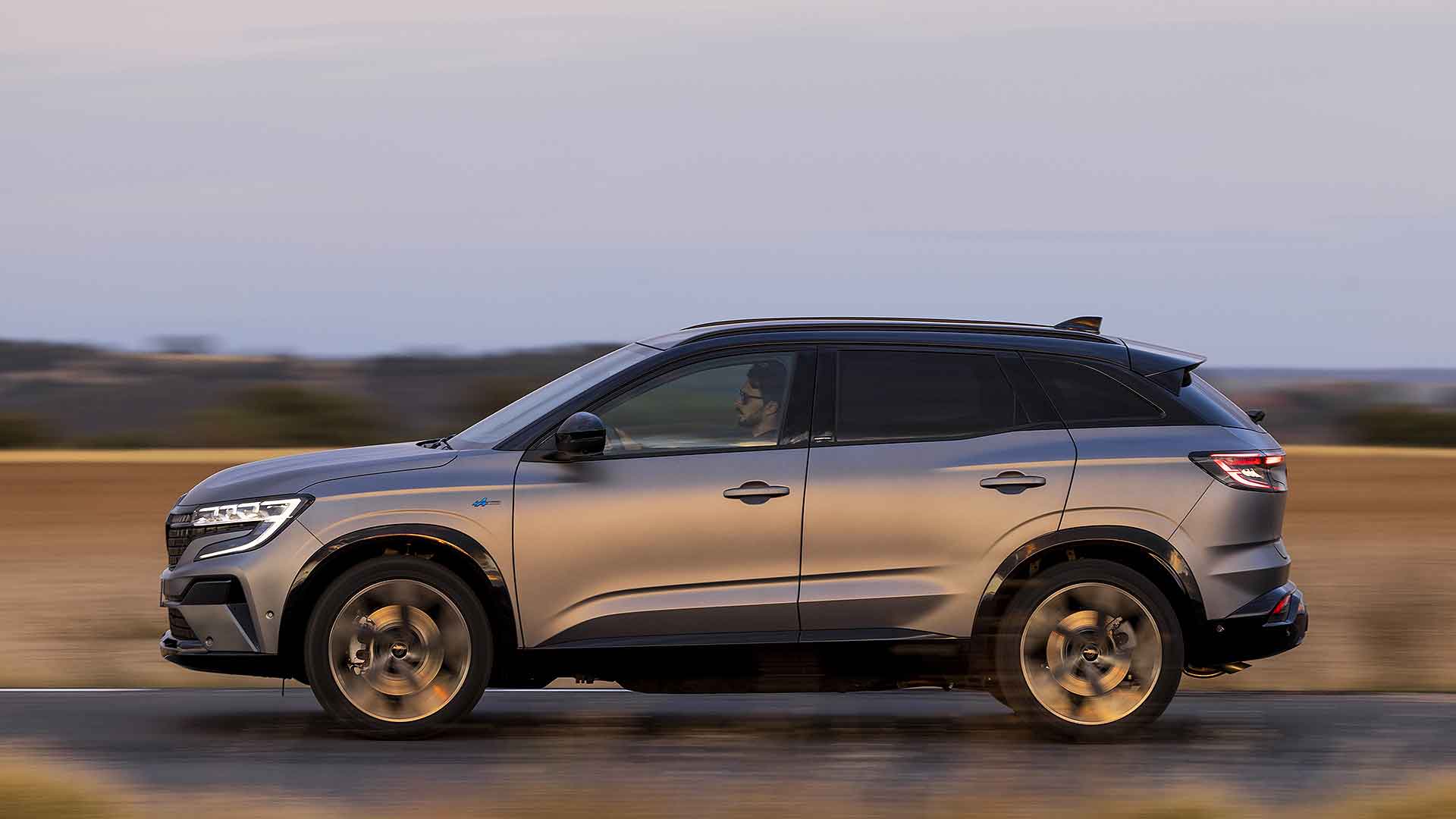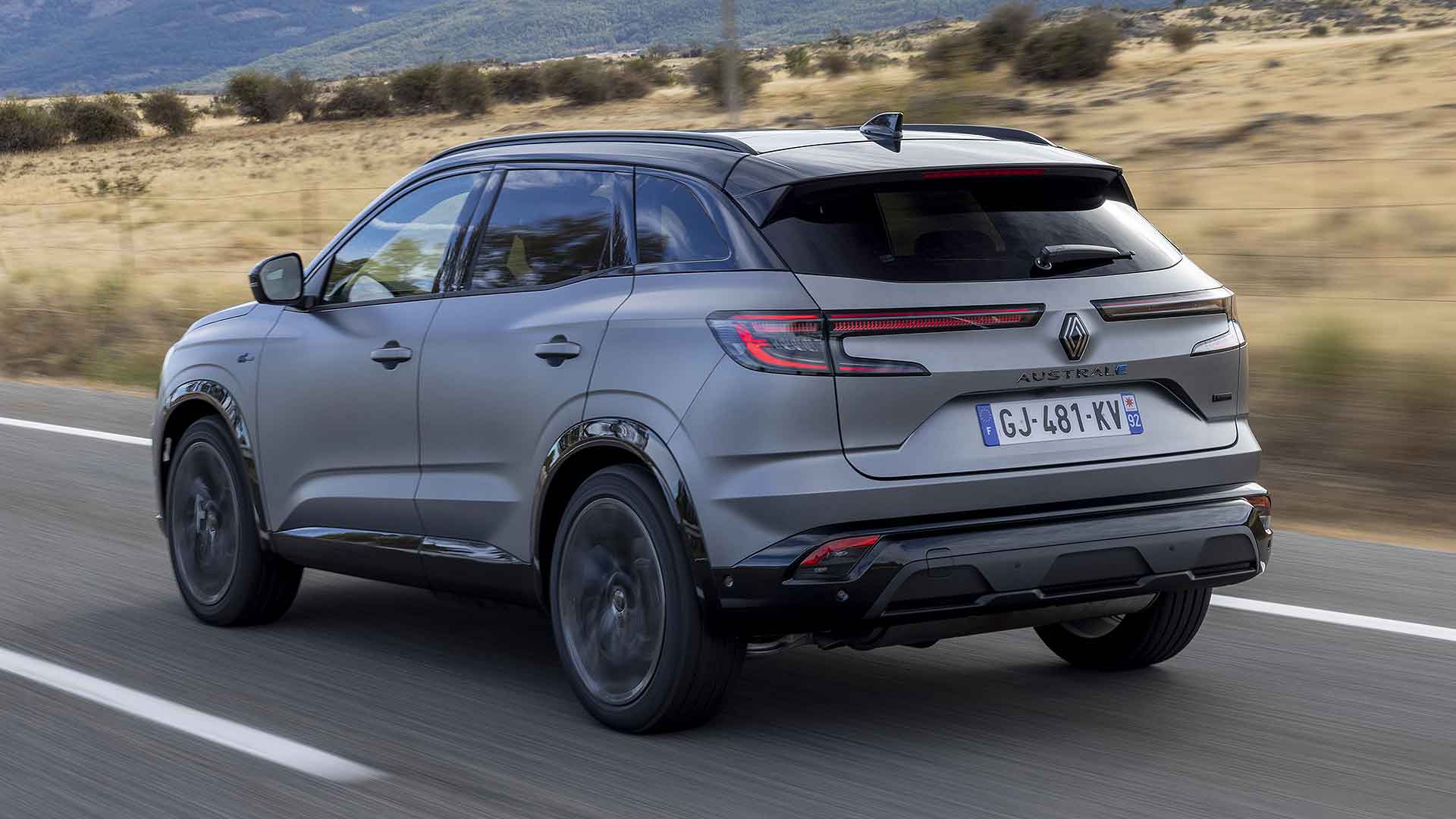The new Renault Austral is the French firm pressing reset on its family-sized crossover SUV. Its predecessor, the Renault Kadjar, was never quite upmarket enough, it argues.
The Austral therefore marks a move upwards in price and premium feel, with the Renault Arkana slotting in at the bottom of the range for those who want something bigger than a Renault Captur, but cheaper than an Austral.
Yes, that’s a lot of family-focused SUVs – but at least it’s simpler than in recent years, where we also had the Renault Koleos and the Renault Scenic and Grand Scenic MPVs.
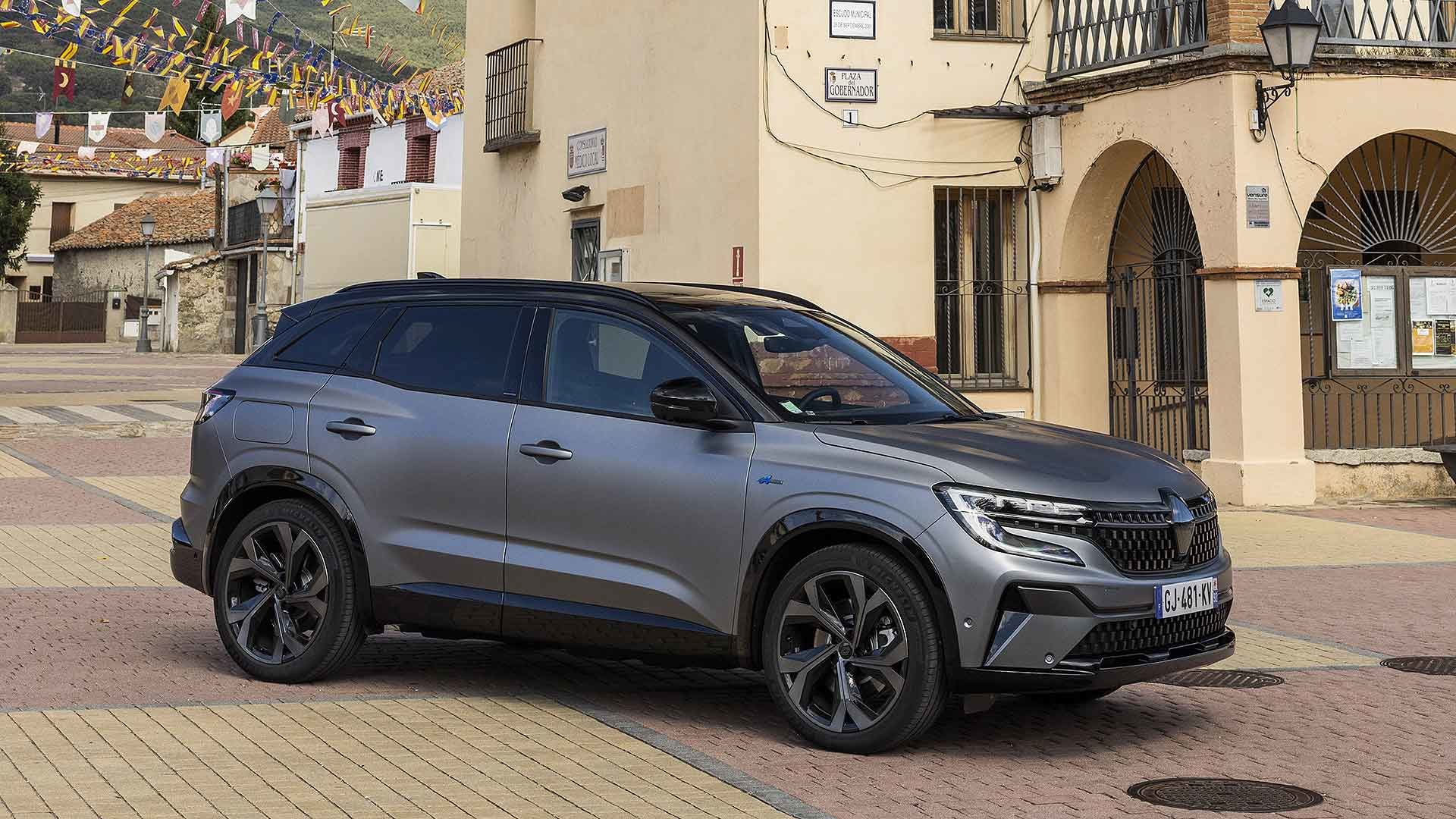
And the Renault Austral is the best of the lot. Built on an all-new architecture shared with the Renault Megane E-Tech Electric, the 2023 Renault Austral has a fully-hybridised engine range, from entry-level mild hybrid units to the full hybrid range-topper.
It is not, note, a plug-in hybrid. Renault believes it works better as a regular hybrid – the latter can be smaller and cheaper, meaning the car itself is more affordable. And besides, when so few people actually ‘plug in’ plug-in hybrids, a well-honed full hybrid may well prove the more fuel-efficient car in everyday motoring.
The new Renault Austral has an all-new, high-efficiency 1.2-litre turbo petrol engine that’s been optimised for pure hybrid applications. It makes it the most fuel-efficient hybrid SUV you can buy, claims Renault.
The new Renault Austral follows the curvaceous, long-wheelbase, wheel-at-each-corner proportions of the new Renault Megane E-Tech Electric. It has a purposeful front end, making good use of the redesigned Renault logo, and distinctive LED lights front and rear give it a contemporary appearance.
Launch cars were showcased in Renault Austral Esprit Alpine trim. This is a new range-toping grade that carries branding from Renault’s sporty division, Alpine. It hasn’t turned its attention to the suspension, yet, but this is a tasteful and smart-looking introduction into how Renault will make more of Alpine on its own cars.
The Renault Austral also comes equipped with a novel new option for the family SUV class: rear-wheel steering. This is normally reserved for far more expensive models such as the new Range Rover. Renault is bringing it to mainstream buyers with the promise of more enjoyable handling at high speeds, coupled with a significantly smaller turning circle when manoeuvring.
Standard on all new Renault Austral is a new infotainment system based on Google’s Android Automotive OS platform. It’s called Renault OpenR and replaces the old RLink system. The firm says it represents a quantum leap in terms of performance and functionality.
Renault Austral rivals include the Nissan Qashqai, Peugeot 3008, Kia Sportage, Hyundai Tucson, Citroen C5 Aircross and Ford Kuga. It is a competitive sector – so the Austral needs to be good. And we’re pleased to report, it is…
What is the Renault Austral like inside?
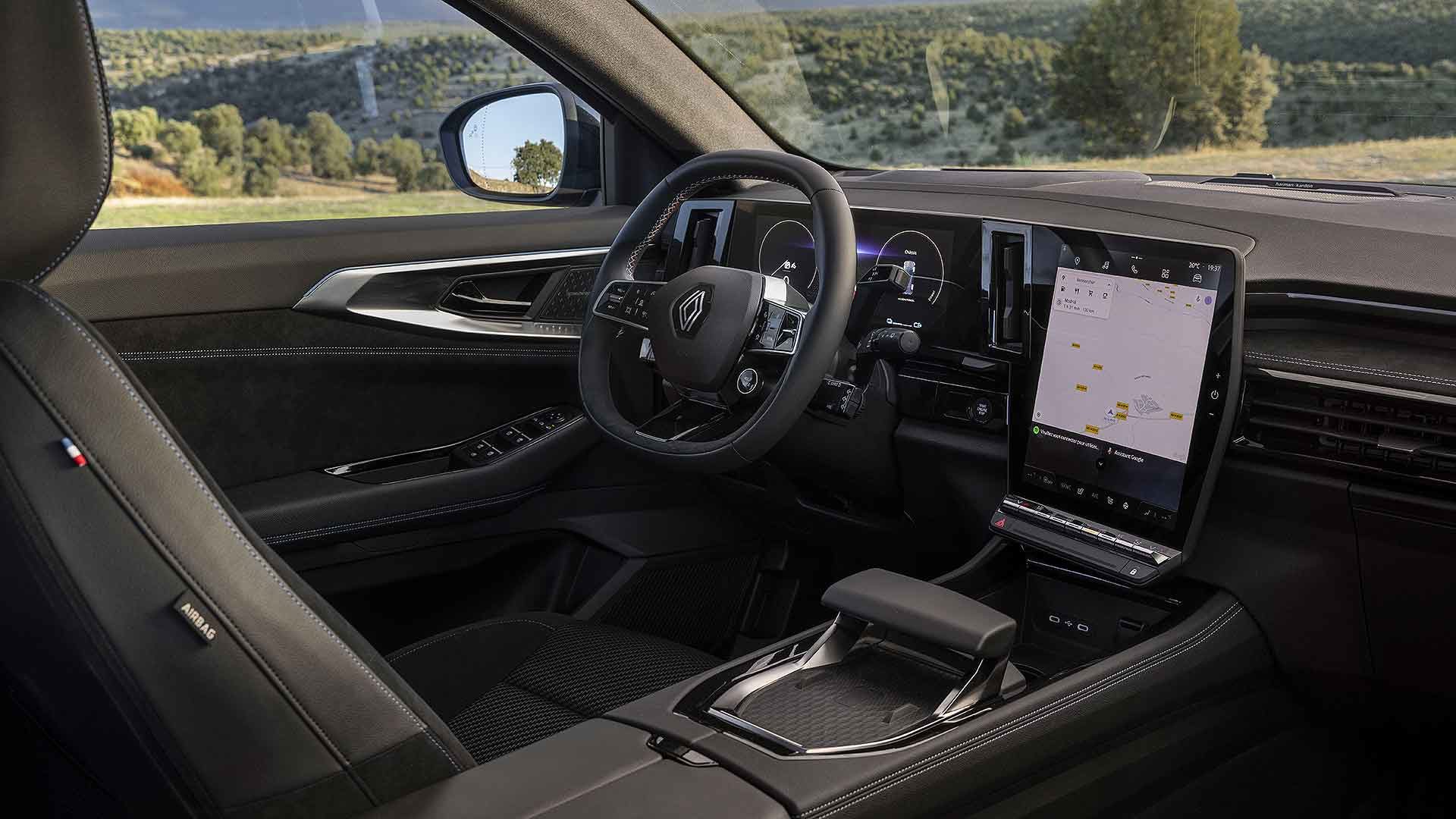
The new Renault Austral continues the impressive developments in the firm’s recent interiors. The new Renault Megane E-Tech Electric’s interior is leaps and bounds ahead of the old Megane, and so too is the new Renault Austral a quantum leap over the Renault Kadjar.
Several aspects stand out as you step into the car: the large central portrait-style infotainment screen, the high and wide centre console with what looks like an enormous aircraft-style gearshifter, and how it’s all nicely set off with satin chrome inserts and neat use of Alcantara trim. Quality is good too, far better than its predecessor.
Firm, well-bolstered seats are wide and nicely-shaped, and there’s a good view over the curvaceous bonnet. The new Renault Austral’s chunky steering wheel is nice to hold – it’s slightly square, like a modern interpretation of the Austin Allegro’s quartic steering wheel, but in a good way – and there’s a sensible combination of touch-sensitive and physical buttons (take note, Volkswagen Group, and ditch your own disastrous touch-sensitive steering wheel controls).
The Renault Austral’s central gearshifter isn’t actually a gearshifter. It’s a sliding cubby – the idea is you can move it to rest your wrist while using the infotainment screen. The person who designed it is a watch geek; when you slide it back it clicks, just like the bezel on a fancy diving watch. Oh, and where is the gearlever? On a column stalk, just like in a Mercedes-Benz.
Renault Austral infotainment
The star of the show is the new Renault Austral’s Android Automotive OS infotainment system. Other brands use Android Automotive OS, most notably Volvo, but Renault’s integration is the most all-encompassing yet. Full Google functionality is built in – including Google Maps, Google Assistant and the Google Play store – but it still looks and feels ‘Renault’.
The Renault Austral infotainment system also uses the Qualcomm Snapdragon platform – this is super-powerful, way faster than most other automotive systems, and unlocks the full potential of Android Automotive. It is seamless and intuitive to use, just like the best smartphones; pinch-and-swipe on Google Maps is actually now faster than doing the same through Apple CarPlay or Android Automotive.
With a super-high definition screen (with mapping repeated on the configurable driver’s display), it’s a flawless system to use, and a real highlight. Pressing the steering wheel voice button uses Google Assistant, which is leagues ahead of any automotive brand systems, and Renault has integrated it deeply into the new Austral. You can say “Hey Google, I’m cold” and it will turn up the heat.
There’s also an array of Renault-specific apps available through the Google Play store. This includes the Vivaldi web browser, so you can surf the web, watch YouTube and even conduct video calls when stationary. There’s lots more to come too, say Renault insiders.
Renault Austral practicality
As a family SUV derived from the same platform as the Nissan Qashqai, the Renault Austral needs to offer plenty of space for five. It succeeds in the front, with an airy feel that’s spoiled only by windscreen pillars getting in the way at junctions.
Rear-seat space in the Renault Austral is more average. Unlike the Renault Megane E-Tech Electric, those in the rear can at least get their feet under the front seats, but the promise of an abundance of space isn’t quite realised once the driver has their seat in position. It’s OK, no more. We do like the wrap-over door bottoms though, which keep your trousers clean when you step in and out (shame the doors don’t open as ultra-wide as on the Nissan Qashqai), and a sliding rear seat means you can boost luggage space without having to fold down the rear seats.
With the fixed rear seat, the boot offers 500 litres of space. With it slid right forward, it expands to 555 litres, or 1,455 litres with the rear seats folded (mild hybrid Renault Australs will have a little more space; the E-Tech Full Hybrid system is stored beneath the boot floor). The boot doesn’t have the clever configurability of the Nissan Qashqai, and there’s a bit of a ledge for you to lift things over.
What is the Renault Austral like to drive?
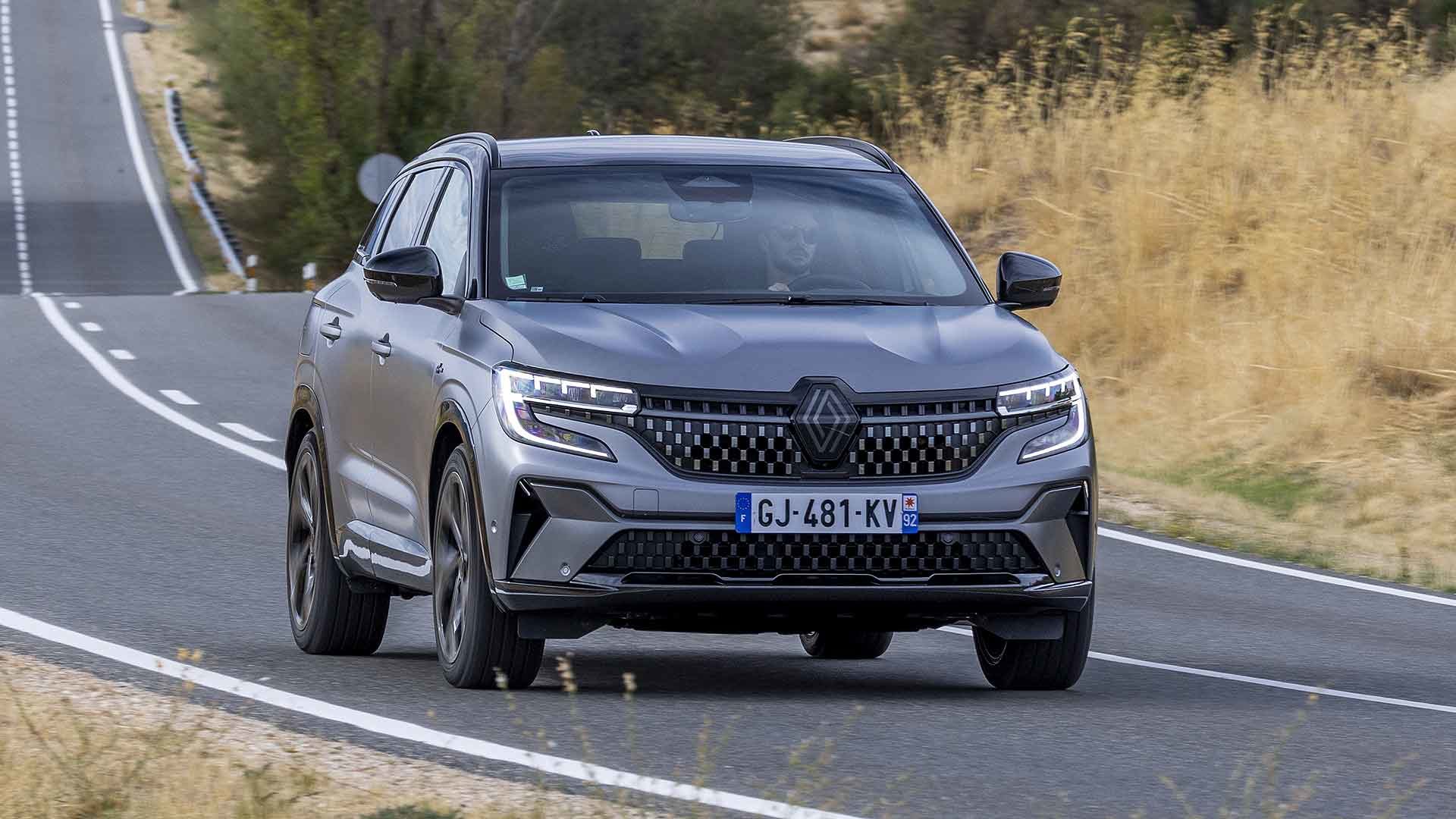
The Renault Austral is a mature and grown-up car to drive. You sense it has much more deep-down substance and solidity than the old Renault Kadjar. It feels safe, secure and robust.
Despite wearing large 20-inch alloy wheels, the Renault Austral has a fuss-free ride. There’s a little patter at lower speeds, but it is flat and even at higher speeds, absorbing harshness very well and remaining unruffled. This stable platform means it handles confidently well, with a natural feel to the nicely-weighted steering, which delivers a good amount of driver confidence.
Renault Austral four-wheel steering
The Renault Austral’s 4Control four-wheel steering is a smart option. It brilliantly reduces the turning circle at slow speeds – you can really sense it steering the rear end round, for a level of manoeuvrability unheard of in cars of this size.
It also works well at higher speeds. In normal mode, you don’t really sense it working – until you turn more sharply into a corner, and feel the rear end tucking in and helping you round. Press the drive mode button on the steering wheel to select Sport and it becomes much more dynamic – almost like a form of old-school passive rear-wheel steer. It’s a lot of fun, creating hot hatch-style interaction in a family SUV.
Renault also allows you to individually alter the level and sensitivity of the Austral’s 4Control rear-wheel steering over no fewer than 13 levels. It’s an intriguing option that, in combination with a really able chassis, is one that keen drivers should certainly consider.
Renault Austral E-Tech Full Hybrid
The range-topping Renault Austral E-Tech Full Hybrid offers a tantalising 199hp from its all-new hybrid setup, which comprises a 1.2-litre three-cylinder turbocharged petrol engine, electric motor and 2kWh ‘self-charging’ battery. Zero to 62mph takes 8.4 seconds, yet it also emits just 104g/km – and, with a remarkable official average of 65.6mpg, is the most fuel-efficient hybrid family SUV on sale.
The brand new engine is a key part of this. The most efficient petrol motor of its type, its brilliant thermal efficiency should promise great real-world fuel economy. Meanwhile, Renault’s ingenuous E-Tech setup, with an automatic transmission that can run in 15 different modes, including five distinct combinations of engine, electric motor and battery, promises newfound levels of engine-off running.
In town, reckons Renault, the engine may be off 80 percent of the time. During a 91-mile drive, we recorded 46 miles of engine-off motoring (there’s a display on the infotainment screen) and overall economy of 61.4mpg. For a real-world test, that’s pretty remarkable.
The Renault Austral is pretty seamless in operation, too. It always starts off in EV mode, which is great for refinement, and the engine starts up discreetly in the background (you can feel a bit of a throb when it’s cold). The engine doesn’t roar in the way that, say, a Toyota hybrid sometimes can, and the fact it shifts through gears, rather than a single-gear CVT transmission, means it feels more natural.
It can still become intrusive when you seek maximum power, but so can all engines. We also noticed it sometimes hunting between gears, and holding onto them, but this could be some sort of efficiency strategy, and the strong fuel economy bears this out.
What you may notice is a little bit of surge when the engine kicks in, and a bit of run-on surge when you lift off, due to the fact it’s turbocharged (most hybrids don’t have a turbo), so power delivery isn’t quite as fluid as a traditional hybrid. We’ll be interested to see how this feels in the cut-and-thrust of busy UK roads.
Renault Austral review: Verdict
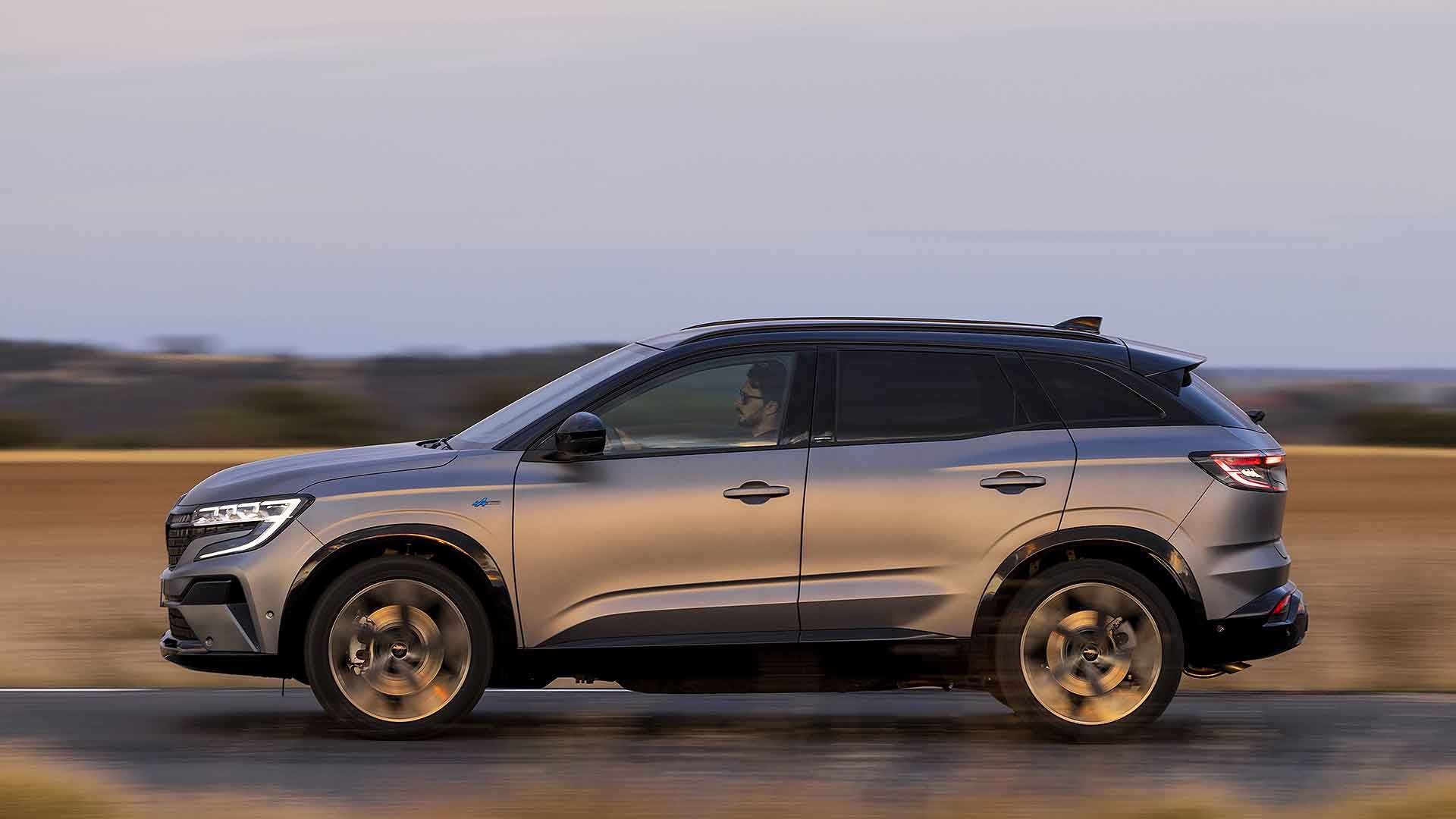
The Renault Austral is a refreshing step upmarket for the reborn French brand. There’s plenty of exciting new product to come, such as new EV recreations of the Renault 4 and Renault 5, but it’s cars such as the Austral that will build the brand here and now.
The family SUV sector keeps on growing and the Renault Austral faces some fine competitors, including the Nissan Qashqai and Kia Sportage. And by engineering such a capable, grown up car, with an enhanced feeling of ability and quality, Renault has placed itself well in the sector.
The standouts are the potential efficiency of the Renault Austral E-Tech Full Hybrid drivetrain, and the brilliance of the Android Automotive OS OpenR infotainment system – with a notable mention for the 4Connect four-wheel steering system.
Practicality could be better, and the hybrid setup isn’t totally seamless, while we sense prices are set to take a jump. But, overall, the Renault Austral is an interesting new entrant in the family SUV class, which brings some welcome new tech and usability. It’s well worth a look.
ALSO READ:
Best family SUVs to buy in 2022
The 27 most radical Renaults ever
